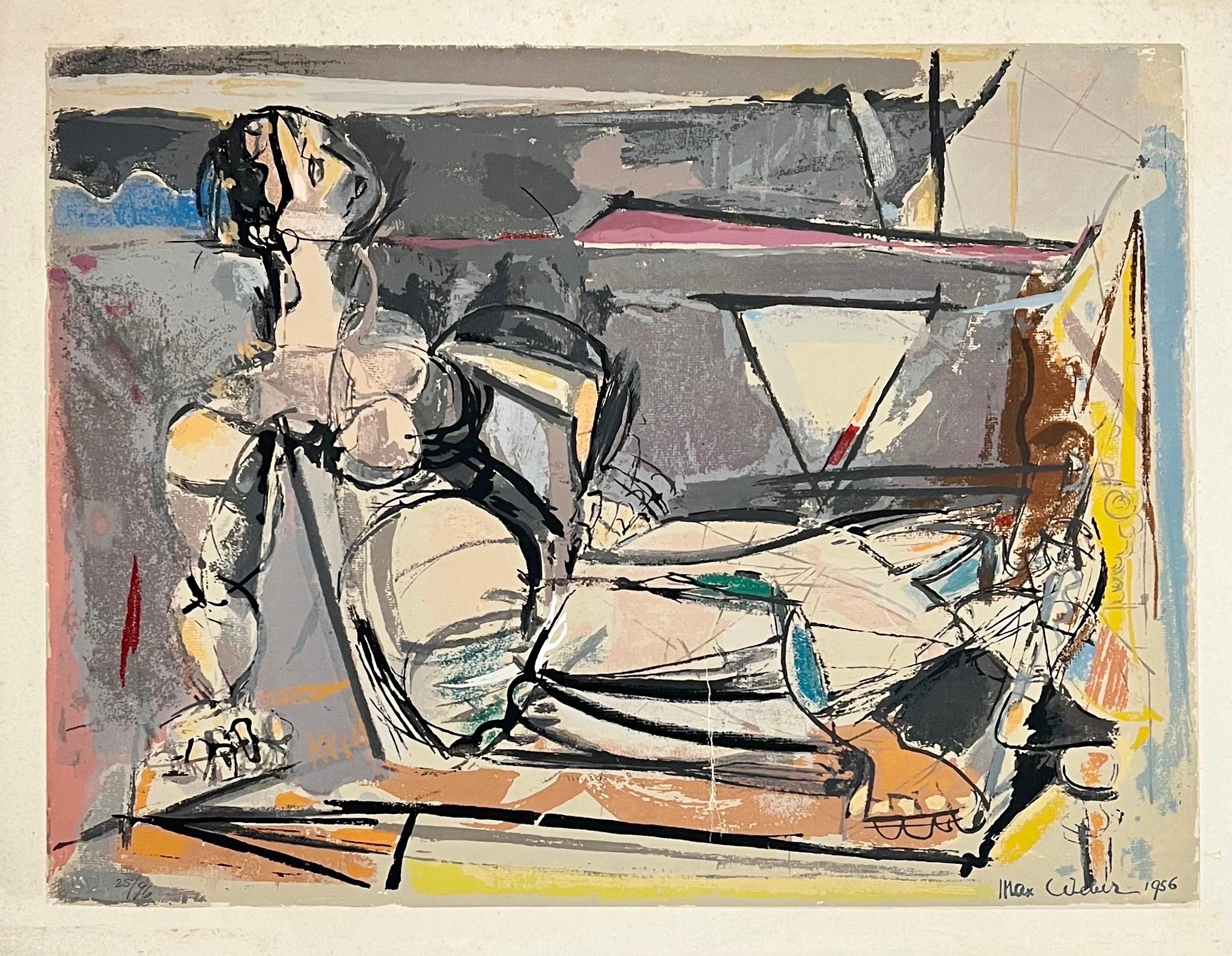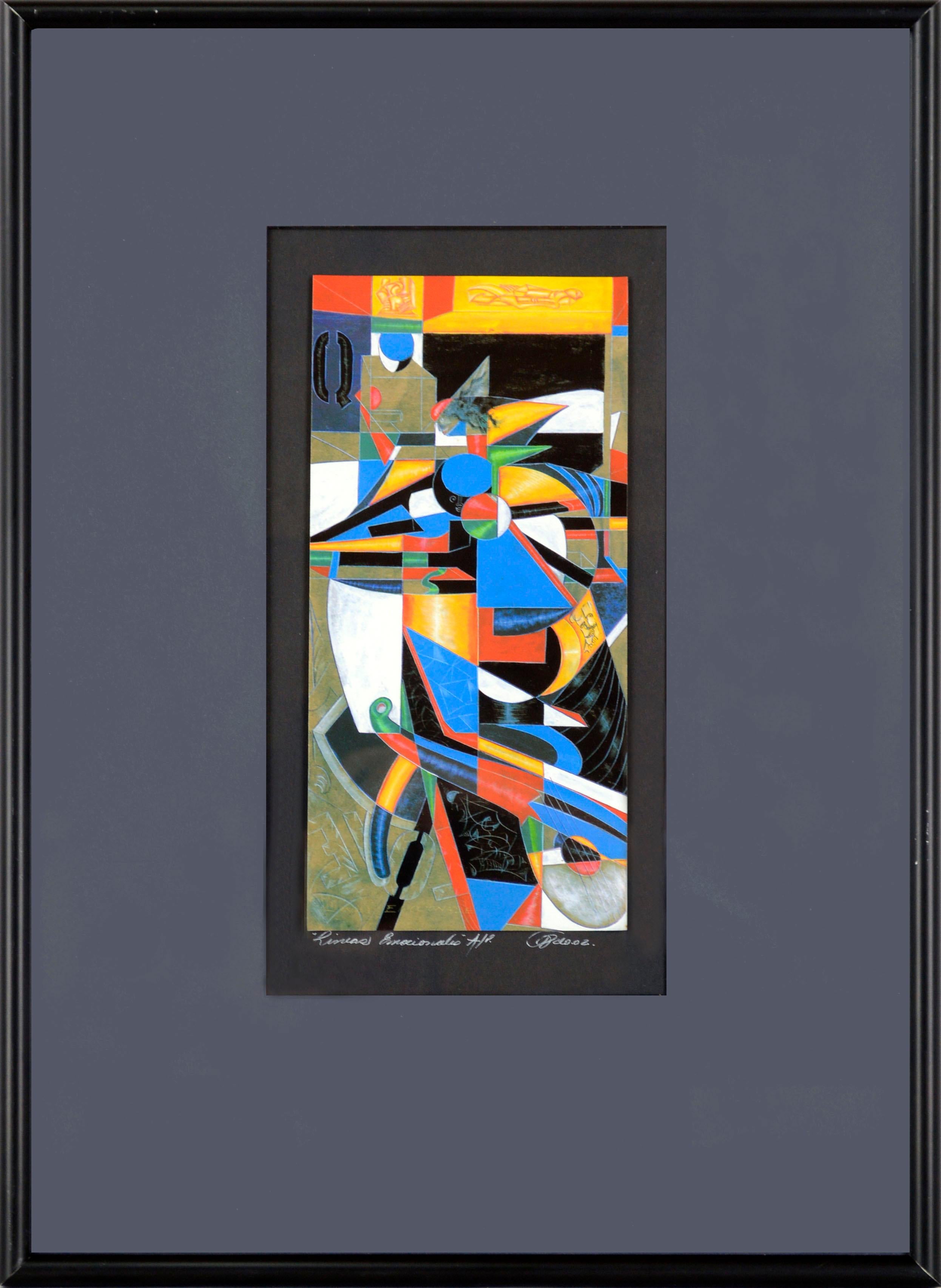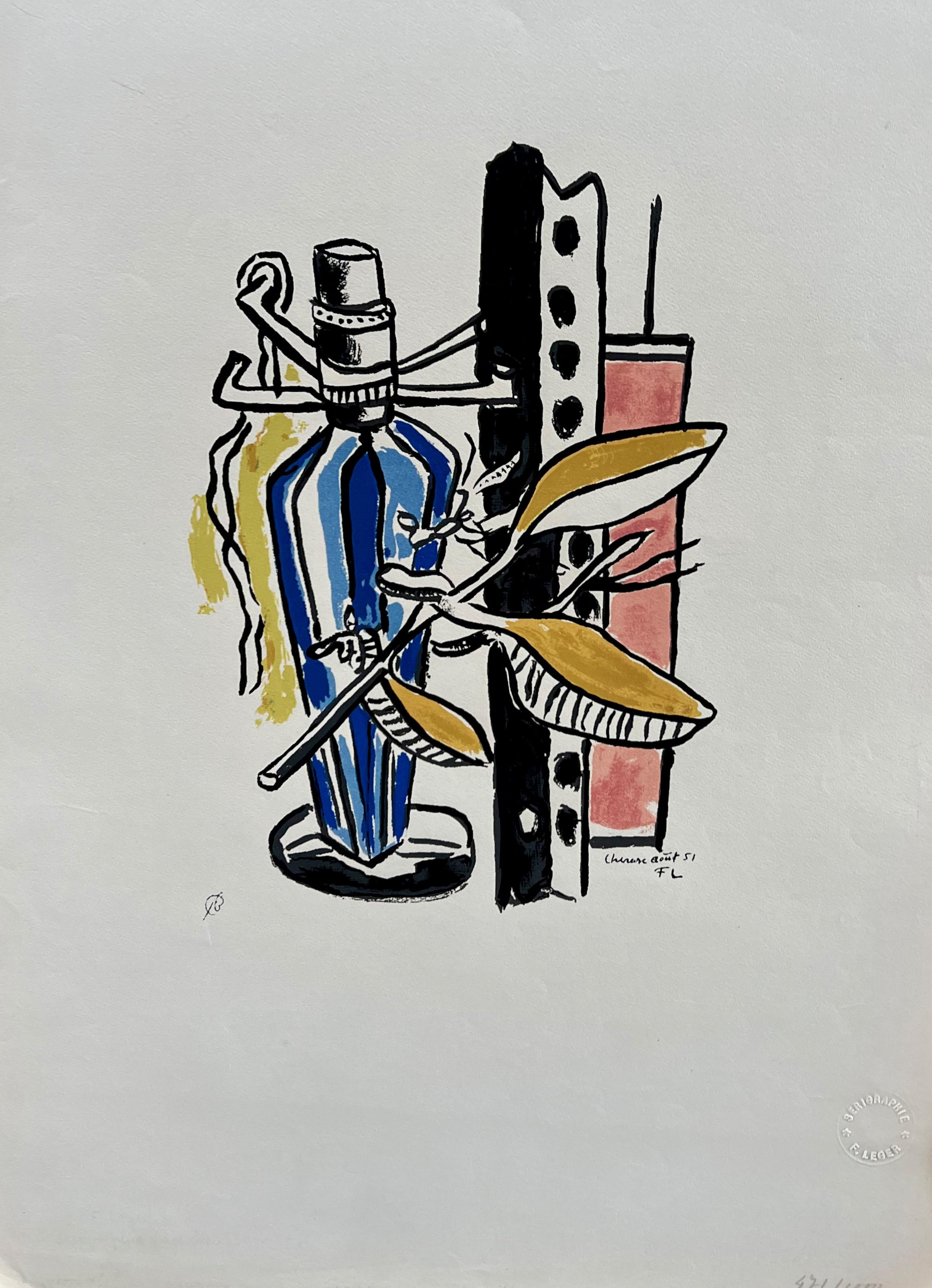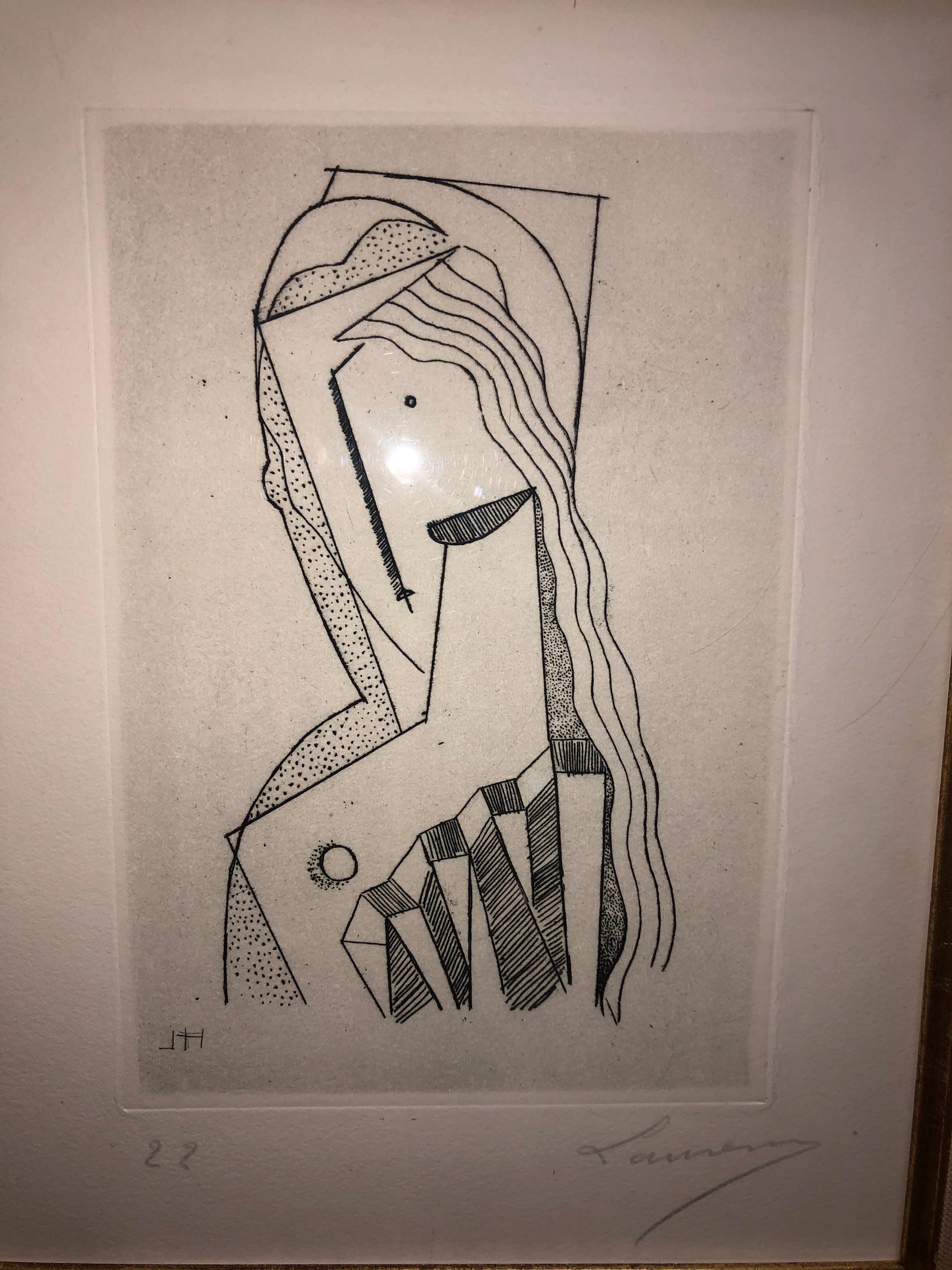Items Similar to Eye of the Peacock, Cubist Abstract Silkscreen by David Porter
Want more images or videos?
Request additional images or videos from the seller
1 of 7
Edwin David PorterEye of the Peacock, Cubist Abstract Silkscreen by David Porter1971
1971
About the Item
Artist: David Porter, American (1912 - 2005)
Title: Eye of the Peacock
Year: 1971
Medium: Silkscreen on Canvas mounted to paper, signed, dated, and numbered in pencil
Edition: 193/250
Image Size: 39 x 32 inches
Paper Size: 42 x 34 inches
- Creator:Edwin David Porter (1912 - 2005, American)
- Creation Year:1971
- Dimensions:Height: 42 in (106.68 cm)Width: 34 in (86.36 cm)Depth: 0.1 in (2.54 mm)
- Medium:
- Movement & Style:
- Period:
- Framing:Framing Options Available
- Condition:
- Gallery Location:Long Island City, NY
- Reference Number:1stDibs: LU4663973512
About the Seller
4.8
Platinum Seller
These expertly vetted sellers are 1stDibs' most experienced sellers and are rated highest by our customers.
Established in 1979
1stDibs seller since 2014
2,695 sales on 1stDibs
Typical response time: <1 hour
- ShippingRetrieving quote...Ships From: Long Island City, NY
- Return PolicyA return for this item may be initiated within 7 days of delivery.
More From This SellerView All
- Etude de PersonnagesBy Pablo PicassoLocated in Long Island City, NYFloating against a brown background, the three hands in this Pablo Picasso print are disembodied and dimensional. Illuminated with light from above, the hands are shown realistically...Category
Late 20th Century Cubist Abstract Prints
MaterialsLithograph
- Composition a la MandolineBy Pablo PicassoLocated in Long Island City, NYRendered against a textured teal background, the still life shown in this Pablo Picasso print features a red mandolin and a wine bottle. A lithograph from the Marina Picasso Estate Collection...Category
Late 20th Century Cubist Abstract Prints
MaterialsLithograph
- Sylvette de Profil Gauche (Sylvette David), Cubist Lithograph by Pablo PicassoBy Pablo PicassoLocated in Long Island City, NYRendered in profile, Pablo Picasso's portrait of the young Sylvette David is an example of the artist's ability to capture youth and vibrancy even in bl...Category
Late 20th Century Cubist Abstract Prints
MaterialsLithograph
- Tete de FemmeBy Pablo PicassoLocated in Long Island City, NYPablo Picasso's mastery of perspective and integration of geometric planes into his portraits is evident in this portrait of a woman wearing a matching orange hat and blouse. Returni...Category
Late 20th Century Cubist Abstract Prints
MaterialsLithograph
- Portrait de Femme au Beret EcossaisBy Pablo PicassoLocated in Long Island City, NYLeaning against the chair, the woman in the plaid beret stares at the viewer in this Pablo Picasso portrait. A lithograph from the Marina Picasso Estate Collection...Category
Late 20th Century Cubist Abstract Prints
MaterialsLithograph
- Portrait de FemmeBy Pablo PicassoLocated in Long Island City, NYThis Pablo Picasso print features the head and shoulders of a woman posing for a portrait. With the integration of the solid, sweeping lines, the artist draws attention to the figure...Category
Late 20th Century Cubist Abstract Prints
MaterialsLithograph
You May Also Like
- American Modernist Cubist Lithograph Screenprint "Reclining Woman" Max WeberBy Max WeberLocated in Surfside, FLReclining Cubist Nude Woman Max Weber (April 18, 1881 – October 4, 1961) was a Jewish-American painter and one of the first American Cubist painters who, in later life, turned to more figurative Jewish themes in his art. He is best known today for Chinese Restaurant (1915), in the collection of the Whitney Museum of American Art, "the finest canvas of his Cubist phase," in the words of art historian Avis Berman. Born in the Polish city of Białystok, then part of the Russian Empire, Weber emigrated to the United States and settled in Brooklyn with his Orthodox Jewish parents at the age of ten. He studied art at the Pratt Institute in Brooklyn under Arthur Wesley Dow. Dow was a fortunate early influence on Weber as he was an "enlightened and vital teacher" in a time of conservative art instruction, a man who was interested in new approaches to creating art. Dow had met Paul Gauguin in Pont-Aven, was a devoted student of Japanese art, and defended the advanced modernist painting and sculpture he saw at the Armory Show in New York in 1913. In 1905, after teaching in Virginia and Minnesota, Weber had saved enough money to travel to Europe, where he studied at the Académie Julian in Paris and acquainted himself with the work of such modernists as Henri Rousseau (who became a good friend), Henri Matisse, Pablo Picasso, and other members of the School of Paris. His friends among fellow Americans included some equally adventurous young painters, such as Abraham Walkowitz, H. Lyman Sayen, and Patrick Henry Bruce. Avant-garde France in the years immediately before World War I was fertile and welcoming territory for Weber, then in his early twenties. He arrived in Paris in time to see a major Cézanne exhibition, meet the poet Guillaume Apollinaire, frequent Gertrude Stein's salon, and enroll in classes in Matisse's private "Academie." Rousseau gave him some of his works; others, Weber purchased. He was responsible for Rousseau's first exhibition in the United States. In 1909 he returned to New York and helped to introduce Cubism to America. He is now considered one of the most significant early American Cubists, but the reception his work received in New York at the time was profoundly discouraging. Critical response to his paintings in a 1911 show at the 291 gallery, run by Alfred Stieglitz, was an occasion for "one of the most merciless critical whippings that any artist has received in America." The reviews were "of an almost hysterical violence." He was attacked for his "brutal, vulgar, and unnecessary art license." Even a critic who usually tried to be sympathetic to new art, James Gibbons Huneker, protested that the artist's clever technique had left viewers with no real picture and made use of the adage, "The operation was successful, but the patient died."[8] As art historian Sam Hunter wrote, "Weber's wistful, tentative Cubism provided the philistine press with their first solid target prior to the Armory Show." The Cellist...Category
Mid-20th Century Cubist Abstract Prints
MaterialsScreen
- Modern Cubist Abstract in Primary Colors, A/P by Juan QuevedoLocated in Soquel, CAModern Cubist Abstract in Primary Colors, A/P by Juan Quevedo "Linias Emocionales", a bold and bright cubist abstract artist proof screen print by Juan...Category
Early 2000s Cubist Abstract Prints
MaterialsPaper, Screen
- Figural Abstract Mid Century Modern Lithograph Portraits, Judaica, Jewish PrintBy Rita GombinskiLocated in Surfside, FLThis is a proof print and is unsigned. it has Jewish Hebraic motifs, a menorah with a Jewish star, a mezusah or megilla scroll by this talented Jewish woman artist. Her whole life lo...Category
Mid-20th Century Cubist Figurative Prints
MaterialsCanvas, Oil
- Composition a la bouteille bleueBy (after) Fernand LégerLocated in Belgrade, MTThis print is part of my private collection. They were published in a numbered unsigned edition of 1000, and a signed edition of 200, printed by Serifraphie Fernand Leger, Paris and ...Category
Mid-20th Century Cubist Abstract Prints
MaterialsLithograph
- Henri Laurens “Tete de Femme a L’eventail’By Henri LaurensLocated in San Francisco, CAHenri Laurens: 1885-1954. Well listed French artist with Auction records in the millions of dollars and over $8000 for a print. This rare print came in a small edition of Which I believe was only 30. This is number 22 which it is pencil marked and also pencil signed by the artist. The print itself measures seven and three-quarter inches high by 5 3/8 inches wide. The paper measures approximately 12 inches high by 9 3/4 inches wide. It is housed in a fabulous vintage hand carved Munn frame...Category
1920s Cubist Abstract Prints
MaterialsEtching
- Liberté j'écris ton nom, by Paul EluardBy Fernand LégerLocated in Wilton, CTComposition in colors by Fernand Léger on the famous poem by his friend Paul Éluard, published clandestinely in Poésie et vérité during the Occupation in 1942. This illustration was ...Category
1950s Cubist Abstract Prints
MaterialsLithograph





